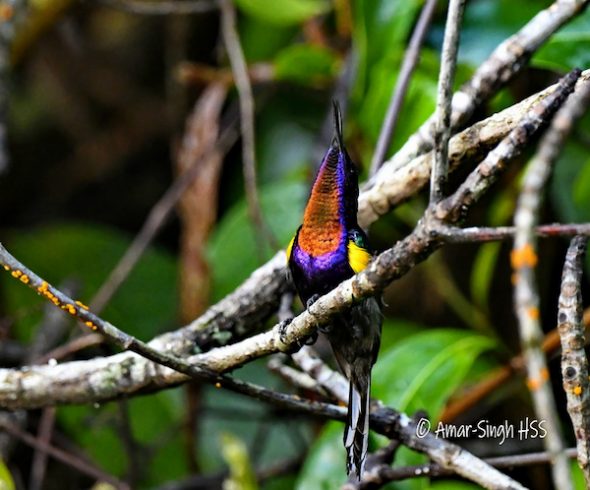
Post 1.
I was at a mangrove forest in Perak on 24th February 2022 and was privileged to observe the courtship behaviour and mating of the Copper-throated Sunbirds Leptocoma calcostetha.
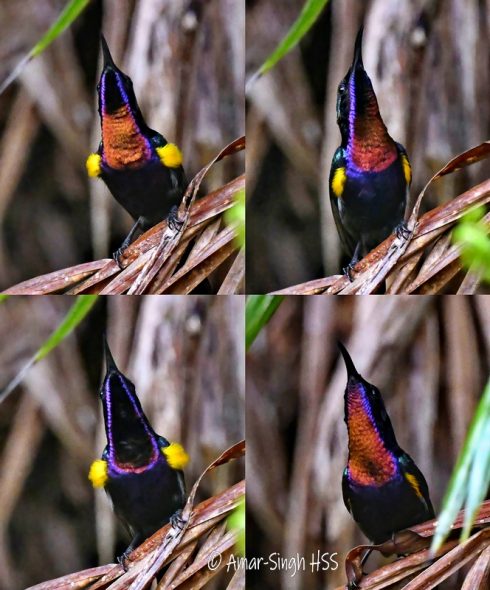
Post 2.
It was 8.50am in the morning and I spotted an adult female Copper-throated Sunbird preening while sitting on some dead branches at an open area of the forest; I was able to get a close approach. She then started singing but at a frequency that my ears had difficulty hearing (I notice that I have some high frequency hearing loss). I started recording the calls and managed a brief recording (see sonogram and waveform – image 6) when an adult male tuned up and began to display.
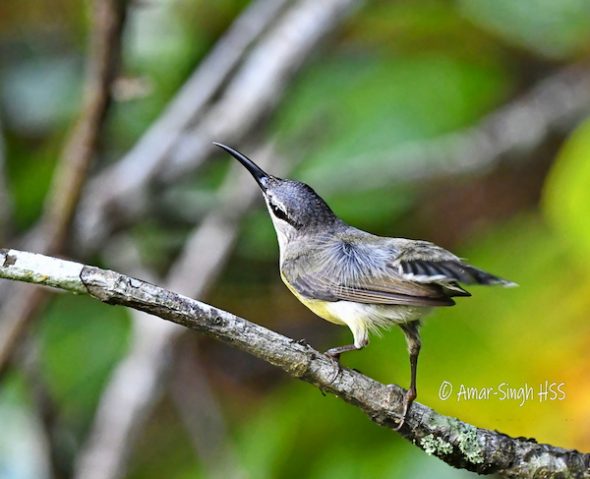
Post 3.
Over the next 12 minutes I watched a delightfully courtship display and mating. Some key observations from the episode:
- On arrival the male positioned himself in the light and about 0.1-0.2 meters from the female on the same dead branches.
- He immediately began to display by extending the apricot yellow pectoral tufts (see image 1). I had previously written an account on pectoral tufts in Sunbirds and it can be found here:https://besgroup.org/2019/01/11/olive-backed-sunbird-cinnyris-jugularis-flammaxillaris-pectoral-tuft/
- In addition, the male adopted a rigid upright/vertical posture with the beak pointed to the sky (tail pointed downwards) and swayed from side to side and backwards and forwards. I have strong suspicion, after have watched this for some time, that the male was catching the light on the metallic plumage of the throat/breast to display to the female – at times brilliant coppery orange-red, other times only showing the iridescent violet malar-streak that runs into the upper breast (see composite image 2); the metallic purplish-blue of the breast was also well seen. At times the bird would withdraw or ‘sheath’ the pectoral tufts and only use the neck and breast plumage to display.
- The bird occasionally would move to another branch of leaf frond, but always keeping close to the female. Unlike courtship rituals in other Sunbirds that I have observed, there was no chasing or flying about between the pair.
- The female initially watched this display intently but after 2-3 minutes she appeared to become excited and some feathers became in disarray. She assumed a tense posture with the head and beak extended upright and the body and tail lifted up intermittently (see image 3). The male gradually approached nearer, possibly for her to view him better (see image 4 – a composite of two images take one after another to try and have both birds in focus).
- After 4-5 minutes, from the start of the activity, the male approached the female on the same branch. The female assumes a submissive posture and the male mounted her to mate (see image 5).
- The male then moved nearby and continued displaying.
- At this point 2 more male Copper-throated Sunbirds appeared in the ‘arena’ to woo the female. I suspect the calls the female was giving earlier was to indicate to males that she was ready to breed and had attracted these males.
- The original male then proceeded to chase away these new suitors a number of times. In between he returned to perform further displays for the female.
- Finally, after 12 minutes from the start of my observation, the original pair flew off together. I have a suspicion that another mating episode could have occurred out of my observation.
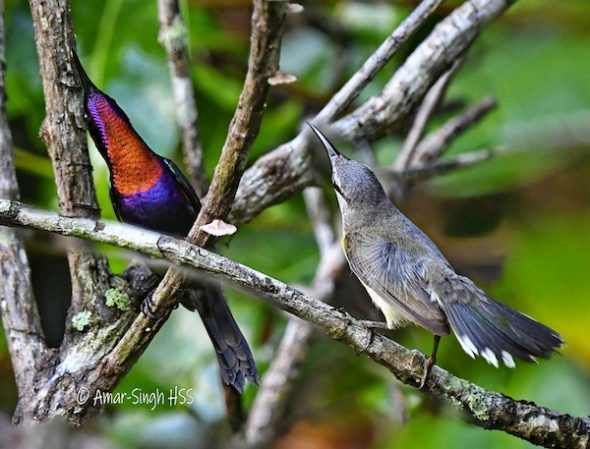
Post 4.
Throughout I was only about 2-3 meters away; in their excitement, they ignored my presence. Later in the morning I saw another (or same) pair approach the open space and there was a very brief courtship-like interaction. I mention this as I suspect the lighting/open area is an important part of the courtship ritual.
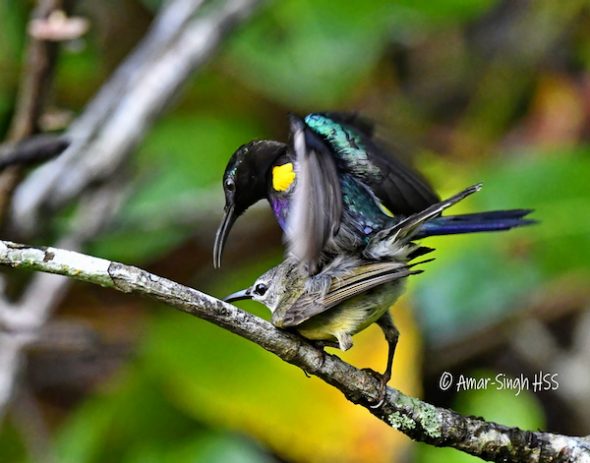
Post 5.
As you can imagine, I have a sizable number of images of the activity and have only shared a few.
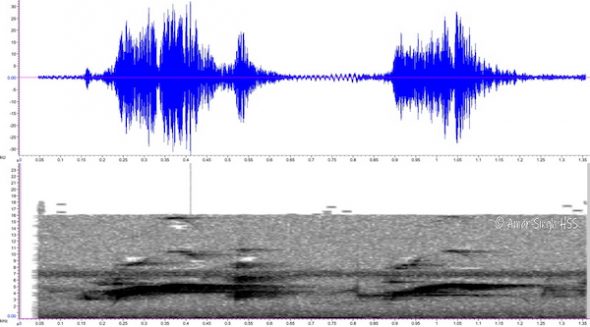
Post 6.
Dato’ Dr Amar-Singh HSS – Ipoh, Perak, Malaysia








